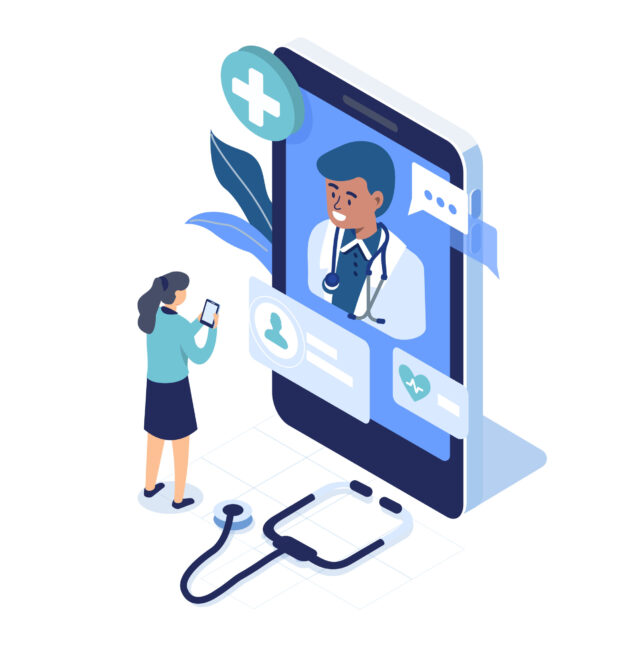
Recently the healthcare and technology industries have collided to find ways for individuals to manage their healthcare needs without having to leave their home. The idea of virtual healthcare was pushed forward due to the pandemic however patients, providers, and vendors are all praising the benefits that accompany this new normal.
Households are finding that virtual care management provides an ease of manageability regarding both routine and more specialized appointments. Telehealth and virtual care management are two separate entities although they are closely related. By eliminating the need to commute to your appointments many people are more inclined to stay on top of their healthcare needs as the feeling of hassle decreases.
1. Ease of Upkeep

Certain elements of your health and wellness routine are easier to push to the side than others. And specifically, those areas where making changes previously required carving out the time to schedule and attend an appointment. Thanks to virtual care management you can now move details of your accounts around on your own time and correspond with the necessary professionals virtually. Both health and life insurance policies are good examples of areas that are now easier to tweak than ever.
If you have an existing life insurance policy and have already gone through the necessary in-person appointments that determine your premiums and policy details, you can manage the rest of the details online. Changing beneficiaries, extending, or shortening policy length, or even cashing out your policy all together are all tasks that no longer exclusively require an in-person meeting. You can review a guide from Mason Finance on cashing out your life insurance policy to browse your options independently.
2. On-Demand Services
Historically medical appointments of all kinds have not been associated with ease or convenience. As people have been forced to rely more and more on virtual options, the industry has responded in a big way. Many professionals now have portals and even apps dedicated exclusively to creating ease and accessibility for their patients.
Virtual help desks have made a huge impact in the way that the health care industry prioritizes customer service. In today’s world many people have grown to set their expectations for response times exceptionally high. Within the health care industry meeting this expectation was not always feasible using traditional methods of customer service. However, thanks to the collision of technology and healthcare, providing more rapid response times is now more realistic.
College students are a group of individuals that benefit greatly from the combo of technology and healthcare. With many students living away from home, making their routine doctors’ appointments from a distance proves challenging. Telehealth has helped drastically to eliminate the logistical gap between students and providers. Apps are also a wonderful way to provide college students with virtual resources in other areas of health and wellness beyond clinical needs such as meditation, nutrition support, and mental health concerns.
3. New Industry Standards

As a result of being forced into the virtual space, medical professionals have had to look at the way they deliver their service and make changes to support this new medium.
Through those growing pains has come the realization that virtual care management is perhaps the direction the industry should continue beyond the demands of the pandemic.
Studies are being conducted to predict the future of virtual care and what that means for the general public. This transformation of the health care system as we knew it is being examined across several areas including, but not limited to, access, efficiency, experience, outcome, and coordination. Patient engagement is also expected to increase as these changes become more common and permanent.
4. Remote Patient Monitoring
The ability to eliminate a clinic visit for individuals who require patient monitoring is huge.
In some scenarios this can be the difference in hours of dedicated time on both provider and patient calendars. When applicable, giving patients the ability to monitor themselves at home and report data electronically to their provider can provide a comparable experience to an in-person monitoring schedule. Going over the requirements for remote patient monitoring with your physician can be done virtually as well. Not every individual will be eligible for this opportunity but learning if you qualify can be done on your own time and at your own pace thanks to telehealth opportunities.
5. Expanded Access to Care
Through the implementation of telehealth providers are now able to expand their networks in ways that generate more access for patients. Juggling your preferred providers with those accepted by your health insurance does not always result in the most convenient set of options, telehealth provides a remedy. Additionally, patients in more rural areas that have limited access to healthcare options because of their location, are no longer limited by logistics when exploring their options.
6. Cost and Overhead Reductions
Unlike expensive clinic and hospital systems, SaaS applications come with a lower operating cost. While the reduction of clinic overhead may not directly result in a cost savings for patients, indirectly there are many ways in which patients can reap the benefits of a SaaS model. The outside costs that accompany a clinic visit, such as travel, parking, childcare, time off work, etc. can certainly add up over time, all of which are eliminated through telehealth.
7. Psychiatric Support

The focus and emphasis on mental health care has become exceptionally heavy since the start of the pandemic. Unfortunately, psychiatric support is an area of healthcare that still carries a stigma that prevents some individuals from seeking the help they desperately need. Thanks to telehealth reluctant individuals can now seek and experience help in the comfort of their own home and with an added level of privacy that comes with not having to travel to an office. Online mental health care also allows those who had a previously established routine to manage their mental health to be able to continue with it despite the restrictions the pandemic has placed on in-person care. Those who previously relied on in-person peer-to-peer support groups now still have a way to stay connected and receive support thanks to virtual care opportunities.













